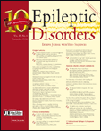Familial Creutzfeldt-Jakob disease presenting as epilepsia partialis continua
ABSTRACT
Creutzfeldt-Jakob disease (CJD) is a rare disorder caused by prions that can affect any part of the central nervous system. It is characterized by a long incubation period, but once symptoms start there is a progressive neurological decline. Clinical features include dementia, ataxia and myoclonus (startle), among others. We report a biopsy-proven case of familial CJD (fCJD) presenting with continuous focal seizures, epilepsia partialis continua (EPC), as the initial presentation. CJD is an unusual neurological disorder with an incidence of approximately one case per million population (Prusiner 2001). The disorder is due to neuronal degeneration resulting from the accumulation of a pathological isoform (PrP) of the prion protein (PrPc). Patients with fCJD have mutations in the gene encoding PrPc (PRNP) (Vercueil 2006, Collins et al. 2004). This fCJD represents 10-15% of CJD cases making the sporadic form more common 85-95% (Parry et al. 2001). During the course of the disease myoclonus has been reported in 88% of cases, and epileptic seizures (partial seizures, generalized status epilepticus) in 8% (Vercueil 2006). Periodic sharp wave complexes (PSWC) are uncommon in fCJD and occur in about 10% of patients (Wieser et al. 2006).




